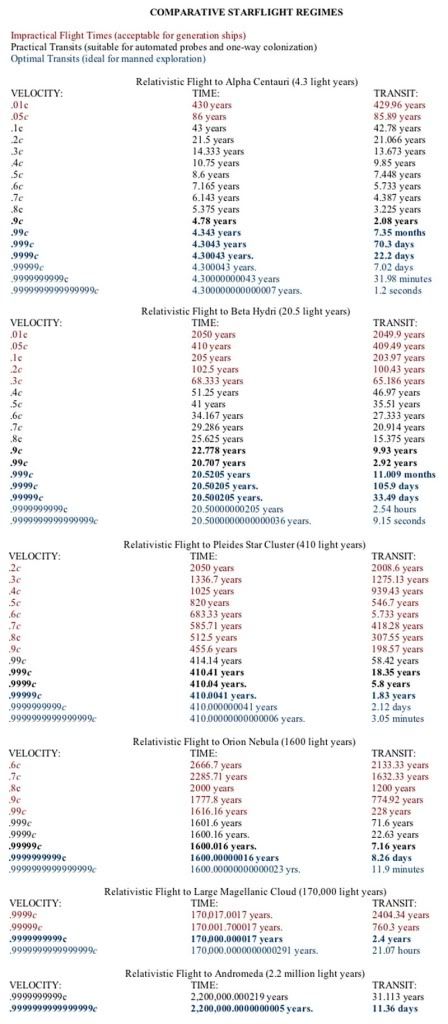Something I worked up for myself some time ago. What the chart shows is the actual realtime travel time (as it would be perceived from Earth) and the relative transit time (as it would be perceived by anyone aboard the ship).

10% light = about .5% time dilation.
20% light = about 2% time dilation.
30% light = about 5% time dilation.
40% light = about 9% time dilation.
50% light = about 14% time dilation.
60% light = about 20% time dilation.
70% light = about 29% time dilation.
80% light = about 40% time dilation.
90% light = about 57% time dilation.
99% light = about 86% time dilation.
99.9% light = about 96% time dilation.
99.99% light = about 98.5% time dilation.

10% light = about .5% time dilation.
20% light = about 2% time dilation.
30% light = about 5% time dilation.
40% light = about 9% time dilation.
50% light = about 14% time dilation.
60% light = about 20% time dilation.
70% light = about 29% time dilation.
80% light = about 40% time dilation.
90% light = about 57% time dilation.
99% light = about 86% time dilation.
99.9% light = about 96% time dilation.
99.99% light = about 98.5% time dilation.
Last edited:

 C is a constant through the same medium. If it changes mediums its speed will change but that change will still go be a constant speed.
C is a constant through the same medium. If it changes mediums its speed will change but that change will still go be a constant speed.
